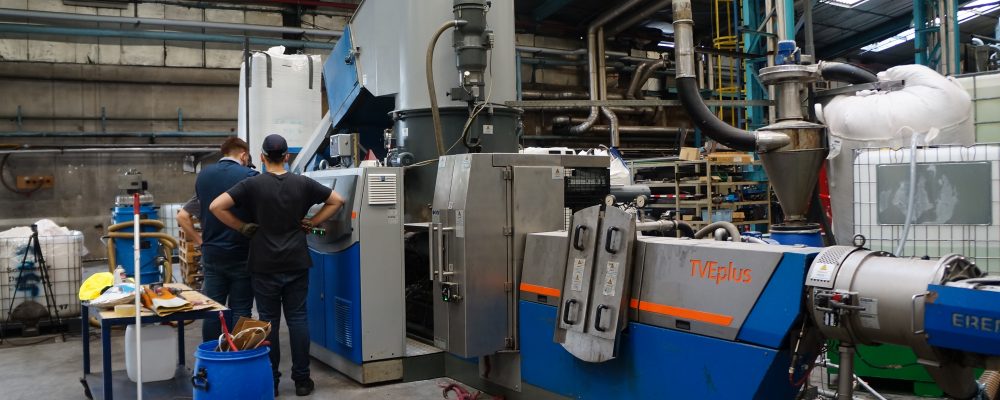In July 2021, our Drulingen facility in Alsace gained a new machine for granulating post-consumer recycled plastic flakes. This capital investment further intensifies our involvement in the recycling and recovery value chain. It also responds directly to customer demand, because from 2025 onwards, our French customers will be legally required to ensure that their packaging products contain at least 25% recycled plastics, with non-compliance resulting in the imposition of a new eco-tax.
How the new regranulation line works
This new granulator gives us control over the process from the plastic extrusion phase onwards. Extrusion is the process that recovers the recycled plastic and turns the flakes into pellets. In practice, it involves melting the plastic by heating it to a high temperature. The melted material is then recovered in the form of plastic rods, which are cut and cooled in water to form the pellets we use as the secondary raw material to produce new packaging at our manufacturing sites.
All of which means that this project involved all our industrial and production teams, as well as the Research & Development department, of course. A large number of tests were conducted to optimise the process. We’ve also successfully addressed new production constraints, such as the fact that the recycled raw material is packaged in big bags, unlike brand new plastic, which is packaged in tanks. At the same time, we’ve had to upgrade some of our production lines to produce packaging in triple-layered HDPE, in which two of the layers are made using brand new material (the inner layer which is in contact with the packaged product, and the outer layer which is printed to the customer’s design), and the middle layer is made from the recycled material.
Hunting down VOCs and allergens
One of the challenges we face today in producing recycled material is that posed by VOCs (volatile organic compounds) and allergens, which are present in the products originally packaged in the reclaimed packaging, and which must then be removed during the recycling process. These organic compounds include carbon, hydrogen and heteroatoms, such as nitrogen, oxygen, chlorine, sulphur, etc. The reason we have to remove them is that they produce a very strong odour, which explains the distinctive smell of recycled plastic. But over and above that, their VOCs also have a negative impact environmentally, because they are direct pollutants for human and plant life, and contribute to the greenhouse effect. They can also alter the future packaged product as a result of migration, and accelerate the ageing of packaging material by altering the structure of its plastic, so it’s essential that we remove them.
How? We opted for the most efficient and effective solution, which is optimised regranulation with degassing in conjunction with sterilisation. To introduce this process, we have invested in two sterilisers. Combined with the regranulation line, this solution allows us to remove the maximum level of pollutants, including VOCs and allergens. The outcome… The new production lines provide assured operator safety and manufacture extremely high-quality products.
For more information, please contact us:
☎️ +33 (0)2 99 16 51 00
sales.packaging@roullier.com
